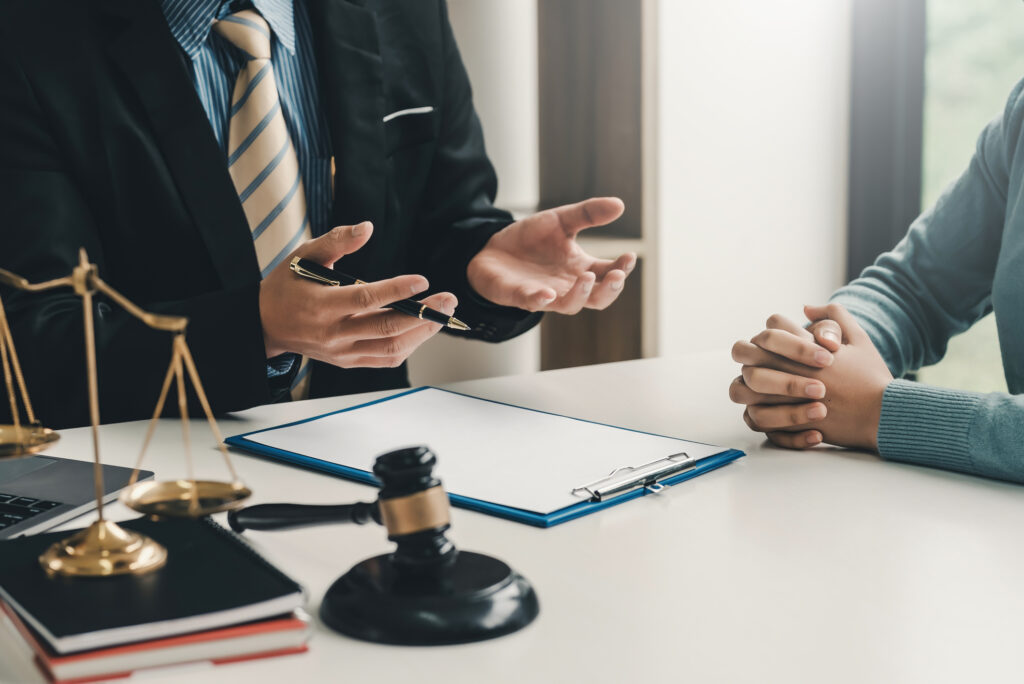
Were you recently involved in a car accident in Orange County? If so, you likely opened a claim against the at-fault driver, seeking compensation for any injuries or property damage that ensued. Sometimes, claims can be settled outside of court, especially when you work with a lawyer who can fight for your rights.
However, if the terms of the claim were not adequate, you’re within your rights to pursue a car accident lawsuit. In short, this means you’re ready to take your case to trial and present the facts in front of a judge.
This can be a complicated legal journey to navigate. Today, we’re sharing what to expect and why you need a lawyer by your side every step of the way.
Car Accident Lawsuits vs. Claims
Before we dive into how a car accident lawsuit works, it’s important to understand how it differs from a car accident claim.
With both a lawsuit and a claim, the end goal is the same. You want compensation to help cover the damages you sustained during the accident.
Either event can end in a settlement, but most accident victims begin by filing a claim with their insurance agency. They’ll describe what happened, as well as the losses that they suffered as a result. The intent is to collect benefits under an applicable policy — either theirs or the other driver’s.
This kicks off a series of negotiations. Conversations will take place between you and the insurance company adjuster. If you hire a car accident lawyer, your attorney will usually handle this part, representing you and speaking on your behalf.
If you’re happy with the settlement that the insurance company offers, then you may be able to end the process right then. The claim would be closed, and you could start healing and moving on. However, settlements aren’t always as high as they should be, even when lawyers get involved.
When this happens, you may decide to file a lawsuit in a civil court. In short, this means you’re suing the other party. The person filing the lawsuit is the plaintiff (you) and the person you’re suing is the defendant (the other driver). Let’s take a look at how it works.
File a Complaint or Petition
The first step in preparing for a lawsuit is to file a complaint. In some areas, this might be referred to as a petition. A complaint lists out exactly what happened, which damages you’re seeking, and why you’ve decided to file the lawsuit.
The paragraphs are numbered for easy reference and include information on what happened, the damages, and the legal basis for pursuing a lawsuit. This is the first official document you’ll complete in the lawsuit and it effectively starts it.
Serve the Court Papers

A lawsuit isn’t meant to surprise the other party. Before your case goes to court, the defendant will have the opportunity to review the charges so they can defend themselves if they choose to do so.
This is one of the cornerstones of the U.S. legal system and it applies to every case, from fender benders to criminal charges. The subject of a lawsuit has the right to be informed about the legal proceedings before they occur.
In the case of a car accident lawsuit, this means serving the defendant with a copy of the complaint. With the complaint, there will also be an official summons that requests their presence at the trial.
Each jurisdiction has its own laws regarding who can serve the summons and the steps they must complete to do so. In most places, this step must take place no more than 30 days after the plaintiff files the complaint.
Receive the Defendant’s Answer
Once the defendant receives the complaint and summons, they’ll send back an official answer. In this answer, they’ll either confirm or deny the facts that are listed in the document. If the defendant decides to use any legal defenses, they will list them in their reply.
Complete the Discovery Phase
Once both parties are aware of and participate in the lawsuit, the next step is to complete what’s called the discovery phase. At this time, both parties will exchange information that applies to the case. This helps each side plan their approach and can lead to a more organized and informed trial.
Some of the elements you can use to build evidence against the other party and strengthen your own argument include:
- Written questions (interrogatories)
- Oral statements (depositions)
In addition, you can also officially request the other party to provide certain documents that you believe would be advantageous to the trial.
Attend the Trial
With the preliminary processes complete, the only thing left to do is attend the trial. While you could represent yourself, it’s always a good idea to have a qualified and experienced trial lawyer by your side to represent you in court.
At the trial, both sides will have the opportunity to make an opening statement. From there, the following events will occur:
- The plaintiff will present evidence and call witnesses
- The defendant will present a defense and cross-examine the plaintiff’s witnesses
- The plaintiff will cross-examine the defendant’s witnesses
- Both sides will present closing statements
Evidence in the trial can consist of both oral testimonies and official, court-approved documents. When both parties have had an opportunity to share their side, the jury will deliberate. If your trial is a bench trial, the judge will ultimately decide the outcome.
Once deliberation is complete, the jury will enter its judgment. They will either rule in favor of the plaintiff or the defendant. If it’s in favor of the plaintiff, the defendant will be required to pay the requested damages up to a certain amount.
Hire an Attorney for Your Car Accident Lawsuit

If your insurance claim didn’t offer you the payout you deserve, it may be time to file a car accident lawsuit. Before you take this next step, be sure to reach out to our legal team.
The right lawyer can make all the difference in the outcome of your trial. It also helps to have a knowledgeable expert by your side who can help you complete each process and represent your best interests in court.
To learn more, contact Santiago Accident Lawyers today for a free, no-obligation consultation, and let’s get started.


